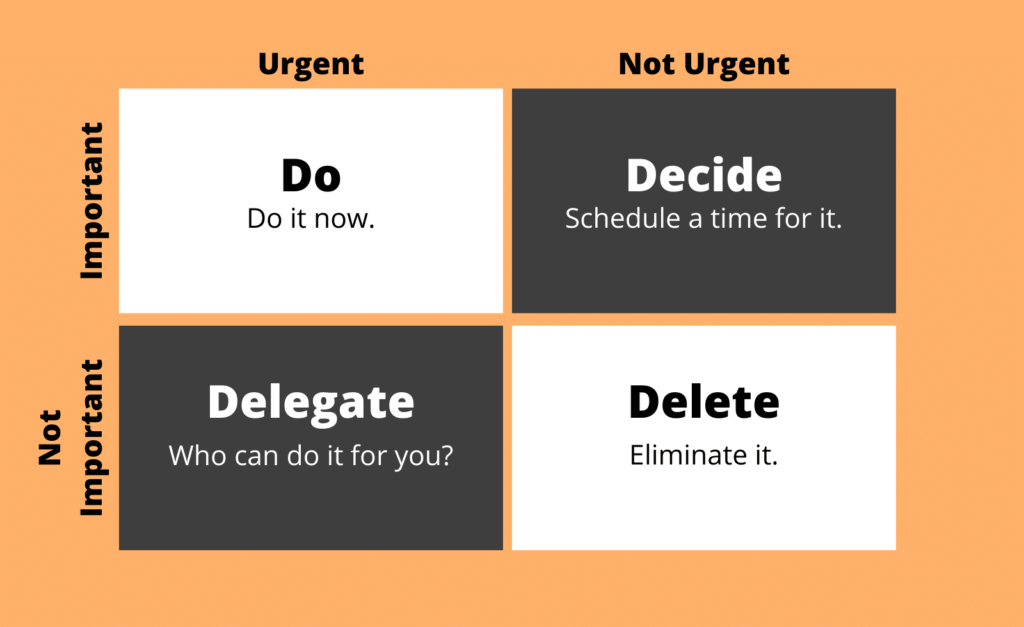Effective time management is crucial for success in any role. A dedicated coach can provide valuable guidance and strategies to help you manage your time better. Here’s how a coach can assist you, along with practical examples of techniques you can apply in the workplace and in your daily role.
Assessing Your Current Situation
We will start by understanding how you currently manage your time, identifying any inefficiencies or time-wasters.
Setting Clear Goals
Together, you’ll set specific, achievable goals for what you want to accomplish in your role. This helps in prioritizing tasks effectively.
Creating a Structured Schedule
Our coaches can help you design a daily or weekly schedule that allocates time for your most important tasks, ensuring you stay focused and productive.
Developing Time Management Strategies
Here are three effective techniques a life coach might introduce:
- Pomodoro Technique
- Example: You have a report to write that you estimate will take about 4 hours.
- Step 1: Set a timer for 25 minutes and start working on the report.
- Step 2: When the timer goes off, take a 5-minute break. This completes one “Pomodoro.”
- Step 3: Repeat this cycle. After four Pomodoros, take a longer break of 15-30 minutes.
- Practical Application: This technique helps maintain focus and prevents burnout by breaking work into manageable intervals with regular breaks.
- Example: You have a report to write that you estimate will take about 4 hours.
- Time Blocking
- Example: You have multiple tasks to complete in a day, including meetings, emails, and project work.
- Step 1: Divide your day into blocks of time dedicated to specific tasks. For example:
- 9:00 AM – 10:00 AM: Respond to emails
- 10:00 AM – 12:00 PM: Project work
- 12:00 PM – 1:00 PM: Lunch break
- 1:00 PM – 2:00 PM: Team meeting
- 2:00 PM – 4:00 PM: Continue project work
- 4:00 PM – 5:00 PM: Wrap up and plan for the next day
- Step 1: Divide your day into blocks of time dedicated to specific tasks. For example:
- Practical Application: This method ensures you allocate sufficient time for each task, reducing the likelihood of multitasking and improving productivity.
- Example: You have multiple tasks to complete in a day, including meetings, emails, and project work.
- Eisenhower Matrix
- Example: You have a list of tasks for the day, including urgent client requests, routine administrative work, and long-term project planning.
- Step 1: Categorize tasks into four quadrants:
- Urgent and Important: Tasks that need immediate attention (e.g., urgent client requests).
- Important but Not Urgent: Tasks that are important but can be scheduled (e.g., project planning).
- Urgent but Not Important: Tasks that need to be done quickly but are not crucial (e.g., routine administrative work).
- Not Urgent and Not Important: Tasks that can be minimized or eliminated (e.g., unnecessary meetings).
- Step 2: Focus on tasks in the “Urgent and Important” quadrant first, then move to “Important but Not Urgent.”
- Step 1: Categorize tasks into four quadrants:
- Practical Application: This method helps prioritize tasks based on their urgency and importance, ensuring you focus on what truly matters.
- Example: You have a list of tasks for the day, including urgent client requests, routine administrative work, and long-term project planning.

Accountability and Support
Regular check-ins with your coach will keep you accountable and provide support to stay on track with your time management goals.
Eliminating Distractions
We can help you identify and minimize distractions, whether it’s social media, unnecessary meetings, or other interruptions.
Improving Work-Life Balance
By managing your time better, you can also ensure you have enough time for personal activities and relaxation, reducing burnout.
Automating and Delegating Tasks
We can guide you on how to automate routine tasks and delegate responsibilities, freeing up more time for high-priority work.
By working with us and implementing these techniques, you can develop a personalized plan that fits your unique needs and helps you manage your time more effectively in your current role.


Leave a Reply